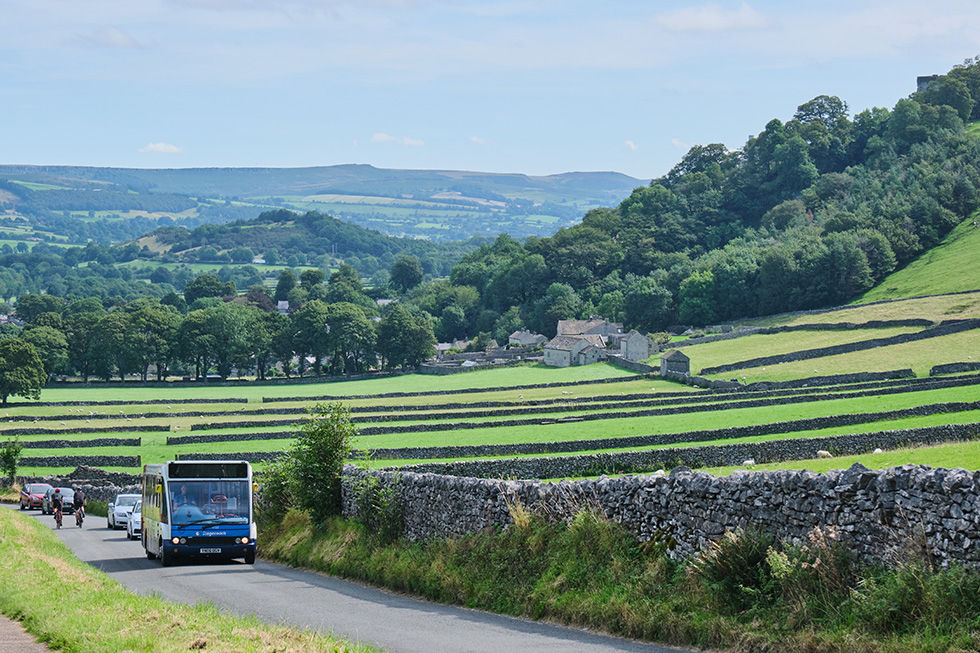Preparing for a future climate
# Intention 1.1 Reduce the effects of climate change on the special qualities
To reduce the effects of climate change on the special qualities, we will know which special qualities are most affected by climate change, and focus action on reducing these impacts. We will undertake a climate change vulnerability assessment on the special qualities of the National Park & produce a mitigation/adaptation plan setting out priority actions.
# Update
The outcome of the climate change vulnerability assessment is now imbedded in the service planning process of the National Park Authority helping to strengthen our work linked to adaption and resilience in the face of inevitable climate change. It will also form an integral part of the evidence base for the review of the National Park Management Plan. The results of this work are available to all partners via the following link: Climate Change Vulnerability Assessment (peakdistrict.gov.uk) (opens new window)
Sustainable Transport
After an enforced break during 2020 due to the Covid-19 pandemic, The Hope Valley Explorer returned in 2021 on weekends and bank holidays from 24th July through to 30th October (30 days in total). During this time, the service carried a total of 1,811 passengers, an average of 60 passengers per day. Currently plans are in place to extend the operational service to run from Saturday 14th May until Saturday 3rd September, covering all weekends and Bank Holidays.
At a national level The Bus Back Better: National Bus Strategy for England was published which directed transport authorities to produce a Bus Service Improvement Plan (BSIP). Delivery of the plans is subject to securing additional government funding. Derbyshire County Council have been success in their bid for funding and we are awaiting confirmation of the final details of the award.
The Travelling Light Project was launched in July 2021 with the aim to bring about change in the way local people and visitors travel to, from and within the Hope Valley. The project aimed to promote walking and cycling for everyday purposes, encourage the use of bus and rail, and reduce the current high dependency on vehicles powered by fossil fuels. During 2021 the project focused on engagement, research and the development of a ‘Scene setting document’. Now the focus has shifted to securing funding for the five-year delivery stage.

The Hope Valley Explorer
Peatland restoration
The new initiative to set up a Great North Bog covering the 7,000 km of upland peat across the North of England is now formed. It includes six partnerships, one being the Moors for the Future Partnership, and will be instrumental in bidding for funding from the peatland capital grant scheme within the Nature for Climate Fund. This is vital work as the area covered by the six partnerships is estimated to release 3.7 million tonnes of CO2 into the atmosphere every year due to the condition of the peat.
Grasslands for carbon
The Management Plan intends to support regenerative agriculture for improved soil heath and carbon retention. Specifically encouraging the use of carbon tools, which take emissions, sequestration and permanent storage into account. In line with this the Farming in Protected Landscapes (FiPL) Programme is providing a new opportunity for farm carbon assessments with a number of individual farmers and 2 estates developing applications for funding to deliver detailed carbon assessment.
Trees in the Landscape
Targets for additional trees in the landscape are included in the Management Plan to match the ambition set out by the national Climate Change Committee. To support our targets a four-year partnership with the Woodland Trust has been established which will create 105 ha of small-scale woodlands. This is supported through the Nature for Climate funding. Farming in Protected Landscapes has funded 6 hectares of wood pasture creation, the enhanced management of 7 hectares of woodland, the establishment of 507 in-field and boundary trees, 2,511 metres of new hedgerows and restored 996 metres of existing hedgerows. The Local Authorities Treescapes Fund has supported the planting of 2300 trees on Authority owned land. Our aspirations for establishing more trees in the landscape remain a significant challenge but these positive actions are an important step in the right direction.
The Wooded Landscape Plan has been approved and a final designed version will be shared with partners in 22/23. This will form part of the revised Landscape Strategy for the National Park.